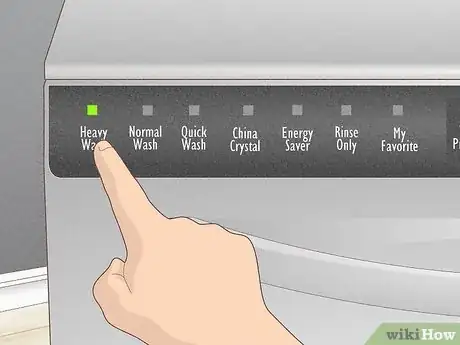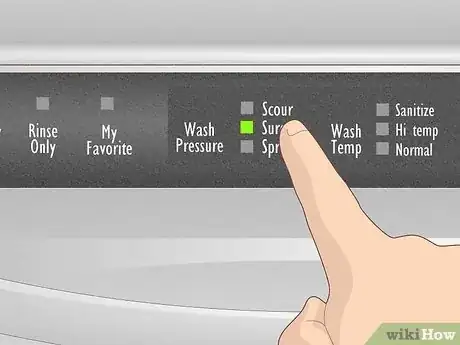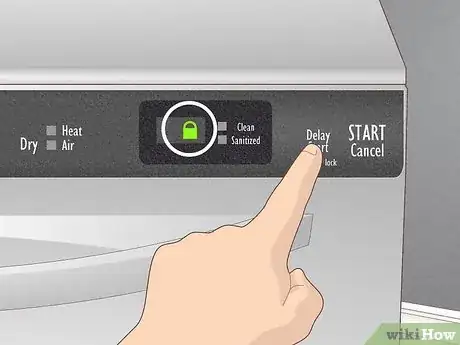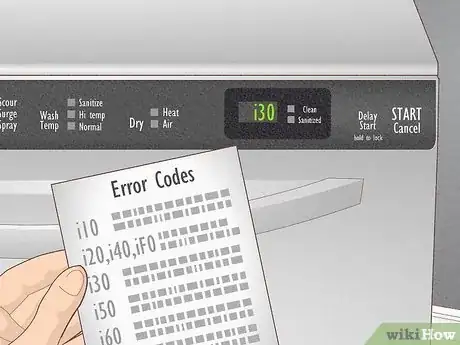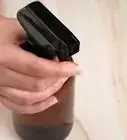This article was co-authored by wikiHow staff writer, Hannah Madden. Hannah Madden is a writer, editor, and artist currently living in Portland, Oregon. In 2018, she graduated from Portland State University with a B.S. in Environmental Studies. Hannah enjoys writing articles about conservation, sustainability, and eco-friendly products. When she isn’t writing, you can find Hannah working on hand embroidery projects and listening to music.
This article has been viewed 2,799 times.
Learn more...
Your dishwasher does a lot of heavy lifting in the kitchen for you—so when it doesn’t work, you and your family can probably tell almost immediately. Fortunately, while Frigidaire dishwashers can be a little finicky, there are usually only a few reasons why they won’t start. Read through this article to learn the proper order of operations for turning on a wash cycle and how to troubleshoot your dishwasher when things go wrong.
Things You Should Know
- To start the dishwasher, select your wash cycle and adjust the pressure and temperature as needed. Hit start and close the door to begin the cycle.
- If the dishwasher won’t start, double check that the door is all the way closed by pushing on it until you hear an audible click.
- If the cycle is paused, press Start and shut the door immediately to restart the cycle.
- Make sure that the Delay Start hasn’t been engaged by holding the Cancel button for 5 seconds.
Steps
Running a Cycle
-
1Load the dishwasher and add dishwasher detergent. To load a dishwasher effectively, put the plates on the bottom and the bowls and cups up top. Add your dishwashing detergent or a dishwasher detergent pod to the detergent dispenser on the inside of the door.[1]
- Frigidaire recommends adding a Rinse Aid, but it’s not a total necessity. If you want to use a Rinse Aid to help get rid of spots on your dishes, pour it into the Rinse Aid dispenser next to the detergent dispenser.
-
2Push the door shut. Your Frigidaire dishwasher won’t start unless the door is fully closed. Push the door shut until you hear an audible click so you know that it’s latched.[2]Advertisement
-
3Select the cycle you’d like. On the front of your dishwasher, you’ll notice a label that says “CYCLE.” Press the CYCLE button to select the one that you want (the green light indicates which cycle you’ve selected). The cycles include:[3]
- Heavy Wash: for very dirty dishes.
- Normal Wash: for everyday dirty dishes (this is the recommended cycle for typical use).
- Quick Wash or 1-Hr Wash: a shorter wash cycle for mildly dirty dishes.
- Energy Saver: a low temperature wash cycle.
- Rinse Only: just rinsing, no washing.
- Favorite Cycle: your own preset cycle that you’ve programmed into the dishwasher.
- Don’t see all your cycle options listed here? Different models have slightly different cycle options. For a list of all your cycles and what they do, check your user manual.
-
4Select your wash pressure option. The cycle that you’ve selected has its own wash pressure setting, but you can adjust it if you’d like to. Adjust the pressure by pressing the “Wash Pressure” button on the dishwasher. Pressure options include:[4]
- Scour: high-pressure for very dirty dishes.
- Surge: normal pressure, this is the default wash pressure setting for all cycles.
- Spray: low-pressure for mildly dirty dishes.
-
5Choose your wash temperature option. Just like your wash pressure, your cycle will automatically select a wash temp for you. However, you can change the setting if you’d like to by pressing the “Wash Temp” button. Temperatures include:[5]
- Sanitize: raises the water temperature in the final rinse cycle to 155 °F (68 °C) to sanitize your dishes.
- Hi temp: increases the water temperature to 140 °F (60 °C) throughout the entire cycle, which is great for removing grease and stuck-on food.
- Normal: the default temperature for all wash cycles.
-
6Select your drying option. There are 2 drying modes on your dishwasher: heat dry and air dry. Heat dry will increase the temperature in the dishwasher to dry your dishes all the way. Air dry will slightly decrease the energy output of the cycle, but your dishes will likely still be wet.[6]
- Heat dry is slightly more sanitary, but air dry saves energy.
-
7Press Start. Once you’ve selected all the settings you want, press the “Start/Cancel” button on the right side of the dishwasher. As long as the door is closed, this will immediately start the wash cycle that you’ve selected.[7]
- You may also notice a “Delay Start” option, which is great for loading dishes now and starting a cycle later. To use the Delay Start, hit the Delay Start button, then keep pressing it until the LED display shows your desired delay time (it can be from 1 to 24 hours). Then, press the Start button.
Troubleshooting
-
1Close the door all the way if the dishwasher won’t start. If you’ve selected your cycles and pressed Start but nothing is happening, the most likely culprit is the door. Push the door shut all the way until you hear an audible click to start the cycle.[8] If that doesn’t work, check out these other reasons that your dishwasher may not be starting:
- Make sure the “Delay Start” option is not engaged. If the Delay Start is on, hold the Cancel button for 5 seconds until you hear a tone, then press Start again.
- Double check the water supply. Make sure it’s turned on and that it doesn’t have a kink in it.
- Check the fuse to the dishwasher to make sure it hasn’t blown.
-
2Press Start and shut the door if the cycle is paused. Opening the dishwasher door during a cycle will automatically pause it. To start the dishwasher again, press the Start button and immediately shut the door.[9]
- If you want to restart a wash cycle, hold the Cancel button for 5 seconds until you hear a tone. Then, select your new cycle and press Start.
-
3Unlock the controls if they are child-locked. Frigidaire dishwashers have a handy feature that allows you to lock the controls so they don’t accidentally get pushed. If you’re pressing buttons and nothing is working, try unlocking the controls by pressing the Delay Start pad until the “loc” icon is no longer showing on the display screen.[10]
- To lock the controls again, press the Delay Start button until the display screen reads “loc.”
-
4Read the error codes on the display screen for specific issues. If your dishwasher won’t start, check the display screen. There may be an error code telling you what the problem is. Common error codes include:[11]
- i10: a low fill has been detected. Check your water supply line to make sure it’s on and not clogged.
- i20, i40, or iF0: a clogged filter or restricted drain line has been detected. Check the filters and sump area for any blockages.
- i30: a leak has been detected in the bottom pan. Look for loose connections in your water supply.
- i50: there’s a problem with the drain or wash motor. Press the cancel button and restart the dishwasher.
- i60: there’s a problem with the water heating system. Press the cancel button and restart.
- iC0: there’s a problem with the electronic control system. Press the cancel button and restart.
References
- ↑ https://www.frigidaire.com/Owner-Center/FAQs/Dishwashers/How-do-I-start-my-dishwasher/
- ↑ https://na2.electroluxmedia.com/Original/Electrolux/Electrolux%20Assets/Document/Complete%20Owners%20Guide/English/117904913Aen.pdf
- ↑ https://na2.electroluxmedia.com/Original/Electrolux/Electrolux%20Assets/Document/Complete%20Owners%20Guide/English/117904913Aen.pdf
- ↑ https://na2.electroluxmedia.com/Original/Electrolux/Electrolux%20Assets/Document/Complete%20Owners%20Guide/English/117904913Aen.pdf
- ↑ https://na2.electroluxmedia.com/Original/Electrolux/Electrolux%20Assets/Document/Complete%20Owners%20Guide/English/117904913Aen.pdf
- ↑ https://na2.electroluxmedia.com/Original/Electrolux/Electrolux%20Assets/Document/Complete%20Owners%20Guide/English/117904913Aen.pdf
- ↑ https://www.frigidaire.com/Owner-Center/FAQs/Dishwashers/How-do-I-start-my-dishwasher/
- ↑ https://na2.electroluxmedia.com/Original/Electrolux/Electrolux%20Assets/Document/Complete%20Owners%20Guide/English/117904913Aen.pdf
- ↑ https://na2.electroluxmedia.com/Original/Electrolux/Electrolux%20Assets/Document/Complete%20Owners%20Guide/English/117904913Aen.pdf


